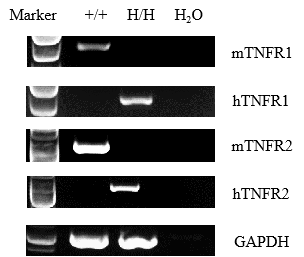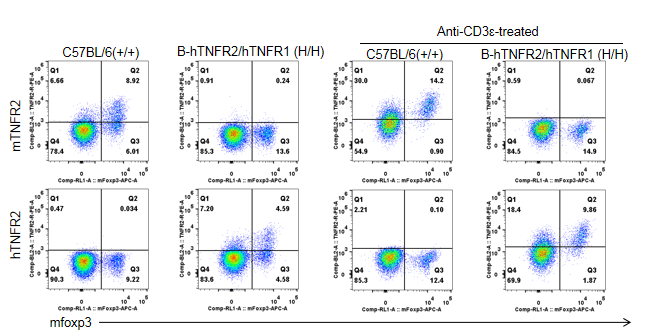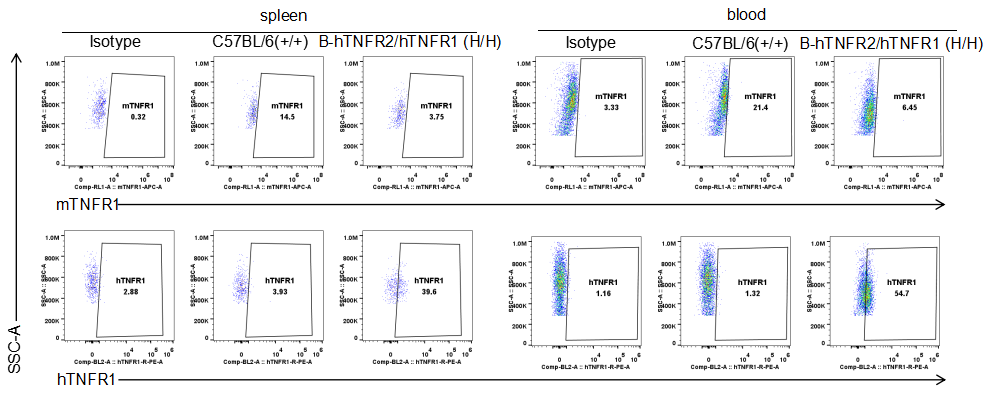


C57BL/6-Tnfrsf1btm1(TNFRSF1B)Bcgen Tnfrsf1atm1(TNFRSF1A)Bcgen/Bcgen • 120802
| Product name | B-hTNFR2/hTNFR1 mice |
|---|---|
| Catalog number | 120802 |
| Strain name | C57BL/6-Tnfrsf1btm1(TNFRSF1B)Bcgen Tnfrsf1atm1(TNFRSF1A)Bcgen/Bcgen |
| Strain background | C57BL/6 |
| NCBI gene ID | 21938,21937 |
| Aliases | TNFRSF1B (Tumor necrosis factor receptor superfamily, member 1b);TNFRSF1A (Tumor necrosis factor receptor superfamily, member 1a) |
Gene targeting strategy for B-hTNFR2/hTNFR1 mice. The exons 2~6 of mouse Tnfr2 gene that encode the extracellular domain was replaced by human TNFR2 exons 2~6 in B-hTNFR2/hTNFR1 mice. The exons 2~6 of mouse Tnfr1 gene that encode the extracellular domain was replaced by human TNFR1 exons 2~6 in B-hTNFR2/hTNFR1 mice.

Strain specific analysis of TNFR1 and TNFR2 gene expression in WT and B-hTNFR2/TNFR1 mice by RT-PCR. Mouse Tnfr1 and Tnfr2 mRNA were detectable only in splenocytes of wild-type (+/+) mice. Human TNFR1 and TNFR2 mRNA were detectable only in H/H, but not in +/+ mice.

Strain specific TNFR2 expression analysis in homozygous B-hTNFR2/hTNFR1 mice by flow cytometry. Splenocytes were collected from WT and homozygous B-hTNFR2/hTNFR1 (H/H) mice stimulated with anti-CD3ε in vivo, and analyzed by flow cytometry with species-specific anti-TNFR2 antibody. Mouse TNFR2 was detectable in WT mice. Human TNFR2 was exclusively detectable in homozygous B-hTNFR2/hTNFR1 but not WT mice.

Strain specific TNFR1 expression analysis in homozygous B-hTNFR2/hTNFR1 mice by flow cytometry. Splenocytes and blood were collected from WT and homozygous B-hTNFR2/hTNFR1 (H/H) mice, and analyzed by flow cytometry with species-specific anti-TNFR1 antibody. Mouse TNFR1 was detectable in the WT mice. Human TNFR1 was exclusively detectable in homozygous B-hTNFR2/hTNFR1 but not WT mice.